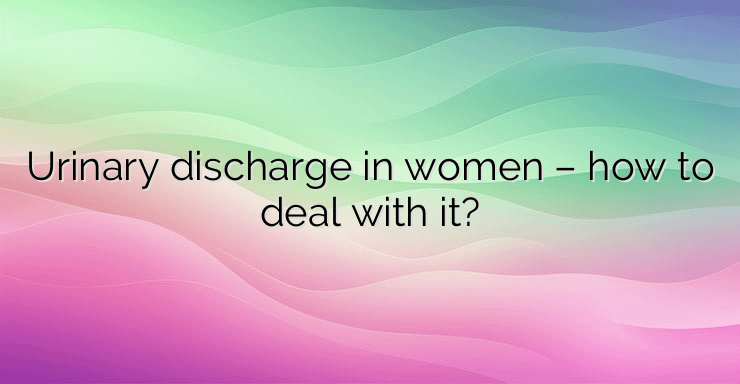Urinary incontinence is a condition that has a major impact on quality of life. It is any complaint of involuntary leakage of urine that affects up to 10% of all women, especially in the elderly, with the incidence reaching over 23% in those over 60 years of age. There are three types of incontinence: stress, urge and mixed. Stress leakage means the involuntary leakage of urine during sneezing, coughing and physical exertion. “Stress” means an abrupt event that indicates the pressure is the abdominal cavity. Half of incontinence cases are stress incontinence. Urgent, on the other hand, is an involuntary release of urine accompanied or immediately preceded by an irresistible urge to urinate. This condition accounts for about 14% of all urinary leakage cases. Mixed incontinence is associated with symptoms on the spectrum between stress and urge incontinence. Stress incontinence is usually the result of weakening and loosening of the supporting structures around the urethra and pelvic floor muscles along with the circular muscle (sphincter) around the urethra. The weakening of the urethral sphincters determines the lowering of the pressure in the urethra at rest and limits the possibility of its additional rise through active mobilization under conditions of stress. Stress incontinence is not uncommon among women because it is the most common consequence of vaginal birth, but it can also occur in nulliparous women – for example, intense athletes. During childbirth, the muscles of the fascial structures of the pelvic floor are stretched and torn, their innervation is disrupted. On the other hand, adult changes and hormonal deficiency in old age lead to tissue atrophy and can also lead to stress incontinence. Also, overweight and conditions in which there is increased abdominal pressure such as chronic constipation, chronic lung diseases, heavy physical exertion predispose to the occurrence of urinary stress incontinence. According to the severity of the discharge, the condition is divided into three degrees: first – discharge during coughing or sneezing in an upright position; second degree – when moving, going down stairs and when coughing while sitting; third – stress incontinence occurs with minimal physical effort and when coughing while lying down. NEWS_MORE_BOX Treatment of stress incontinence is initially conservative and lifestyle changes are necessary. Trying to lose weight, reducing coffee consumption and controlling constipation are measures that can relieve involuntary discharge. Quitting smoking is also recommended to reduce the incidence of coughing. These seemingly simple actions can improve the quality of life in about 3 months. If the discharge continues, then conservative treatment is given. Conservative treatment helps support the bladder neck. Exercises to tighten the pelvic floor muscles,which represent repeated contractions and relaxations of the sphincters are recommended. Used with is pessaries. These are devices that non-operatively correct prolapse of the pelvic organs, create support under the urethra and have a good effect on stress incontinence. Medical treatment of stress incontinence aims to improve the function of the sphincters. In older women with estrogen deficiency, creams or vaginal gels with estriol are a good adjunct to the main treatment of incontinence. Alpha-adrenergic agents increase the tone of smooth muscle in the urethral wall and thus reduce involuntary discharge. Midodrine is such a medication, which is taken at 2.5 mg-5 mg daily (maximum dose 10 mg). It is important to know that the drug can increase blood pressure, so it should be taken at least 4 hours before bedtime. This avoids an episode of hypertension in the evening hours. Some antidepressants have as a side effect an increase in the tone of the urethral sphincter. Such a drug is, for example, imipramine, which belongs to the group of tricyclic antidepressants, but is also used in practice as a means of choice, reducing the involuntary release of urine. In the absence of influencing stress incontinence through conservative and medicinal methods, surgical intervention is resorted to. There are various surgical techniques, the basic idea of all of which is to elevate the bladder neck to its normal anatomical position behind the pubic bone and create a support against which the urethra is compressed by abdominal pressure.the main idea of all being to raise the neck of the bladder to the level of its normal anatomical position behind the pubic bone, and to create a support upon which the urethra is pressed by abdominal pressure.the main idea of all being to raise the neck of the bladder to the level of its normal anatomical position behind the pubic bone, and to create a support upon which the urethra is pressed by abdominal pressure.


Leave a Reply